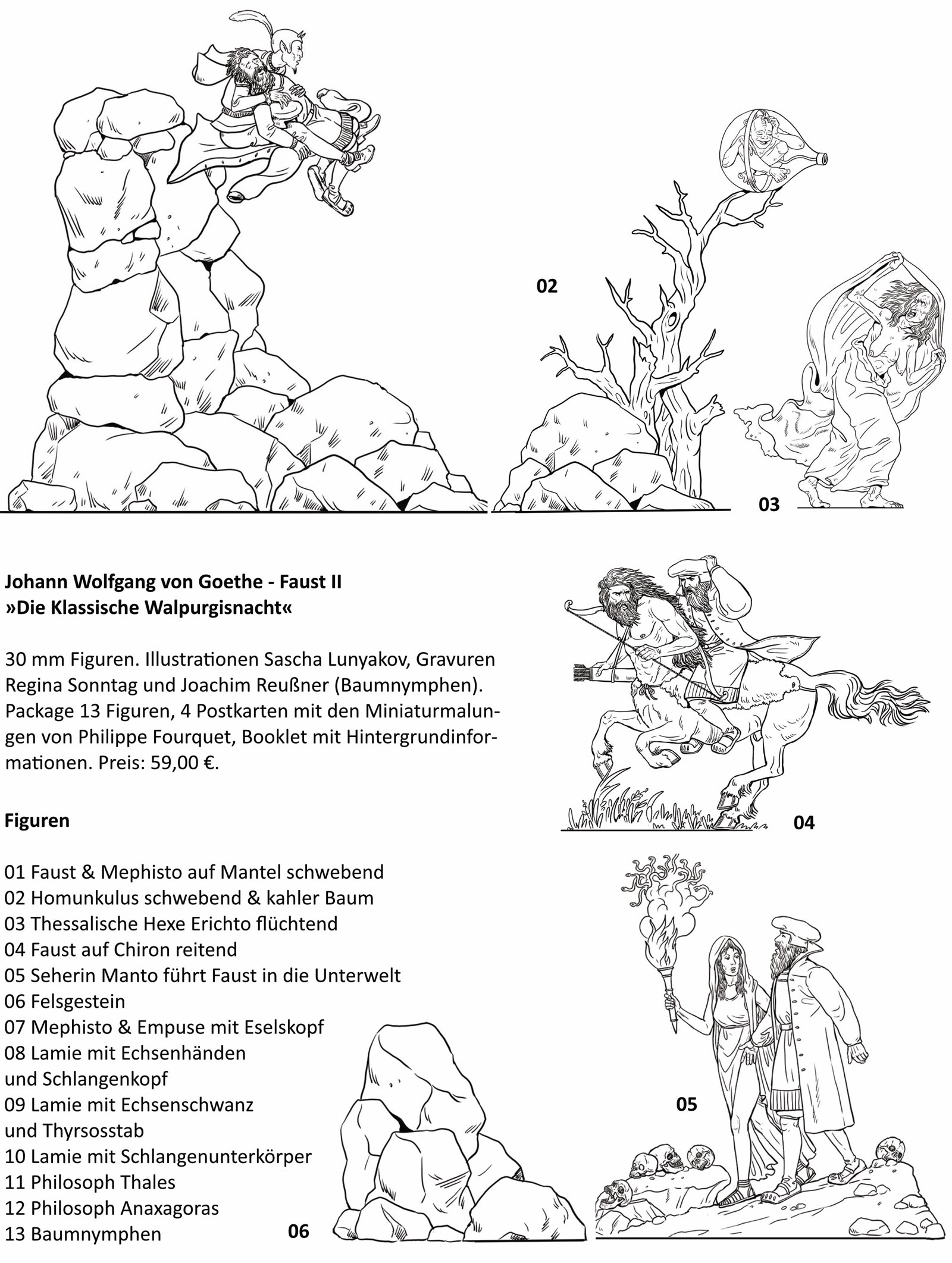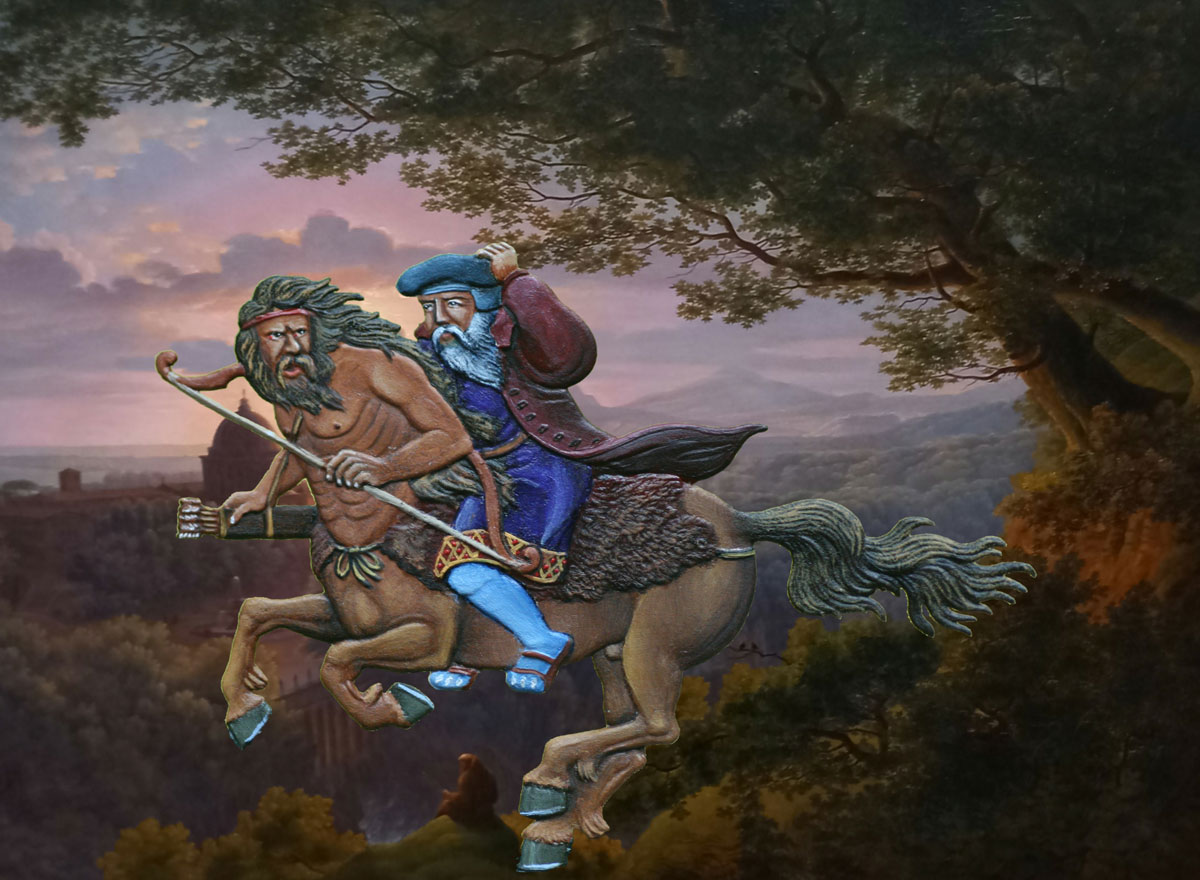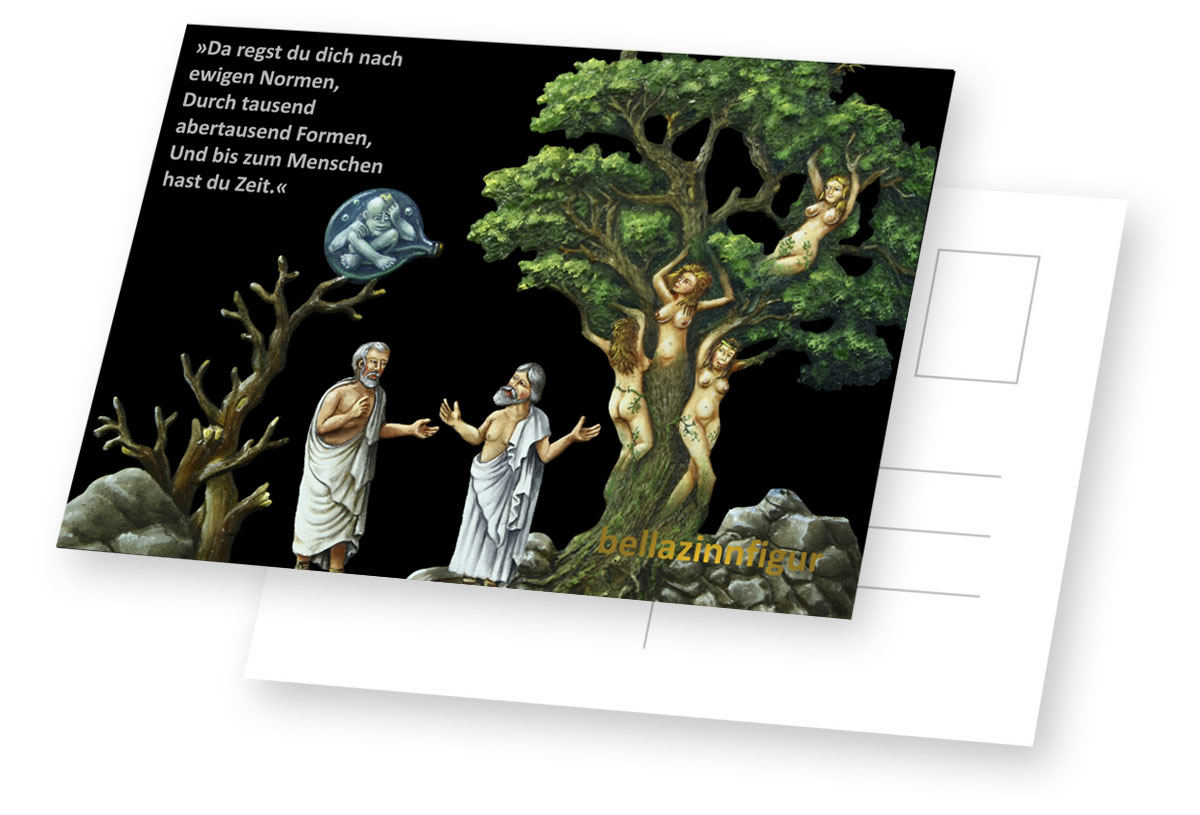The Classic Walpurgis Night
In search of Helena, the lovelorn Doctor Faust is drawn to ancient Greece in the second act of the tragedy. Already at the emperor's court in the first act, Mephisto had made him believe in the most beautiful woman in the world in a magical spectacle. Full of illusions and blinded by passion, the restless man now pushes to win the real Helena. From Professor Wagner's laboratory, Faust and Mephisto travel as aerialists on Faust's cloak to ancient Greece. The little artificial human Homunculus, created by Wagner, flies ahead of them squatting in his glass vial and shows them the way through time and space.
Faust II The Classic Walpurgis Night Set


With the 13 figures of this new series, five scenes of the Classic Walpurgis Night can be depicted.
First scene: The aeronauts. Led by the artificial human Homunculus, Mephisto and the unconscious Doctor Faust fly to ancient Greece. The Thessalian witch Erichto takes flight from the three aeronauts. Composition and miniature painting Reinhold Pfandzelter.
Second scene: Mephisto at the Lamien. The lustful Mephisto roams through Thessaly to catch something and arrives at the Lamias and Empuse with the donkey's head. With their erotic bodies they entice him seductively, only to make him shudder with their gruesome metamorphoses and finally to turn him away shamefully. The disturbed Mephisto shows himself here similar to his horse's foot in the Harz Walpurgis Night. The Lamien are mythical hybrid creatures half human half snake or lizard. In literature, they are also considered ancient vampires. Mephisto moans "Lacerte slips out of my hands". Lacerte means lizard. In Goethe's Venetian Epigrams, this is the name given to the streetwalkers. Composition and miniature painting Reinhold Pfandzelter.
Third scene: Faust rides on Chiron. The centaur Chiron, carrying Faust, chases him at the very fastest gallop across the Pharsalian fields to bring the lovesick man to the seeress Manto. Minature painting by Reinhold Pfandzelter.
Fourth scene: Manto leads Faust into the underworld. Manto is the goddess of necromancy, the guardian and guide of the passages and gates between the upper and lower worlds. Faust wants to petition Persephone, the queen of the underworld, for Helena's release. Manto shines ahead with her torch, from which small snakes of smoke coil. Faust is equally intimidated and fascinated by the passage into hell. Composition and miniature painting Reinhold Pfandzelter.
Fifth scene: Homunculus with the philosophers. The small scene shows the arguing Greek philosophers Thales and Anaxagoras. The homunculus hovering above them has asked them for advice on how to come into being as a human being. Anaxagoras, the "fire philosopher," wants to keep Homunculus in the Pygmy state of violence and have him crowned king. Thales, the "water philosopher", wins the argument and leads Homunculus to the open sea, the origin of the gods, so that he can unite with the sea nymph Galatee. Miniature painting Philippe Fourquet.






















